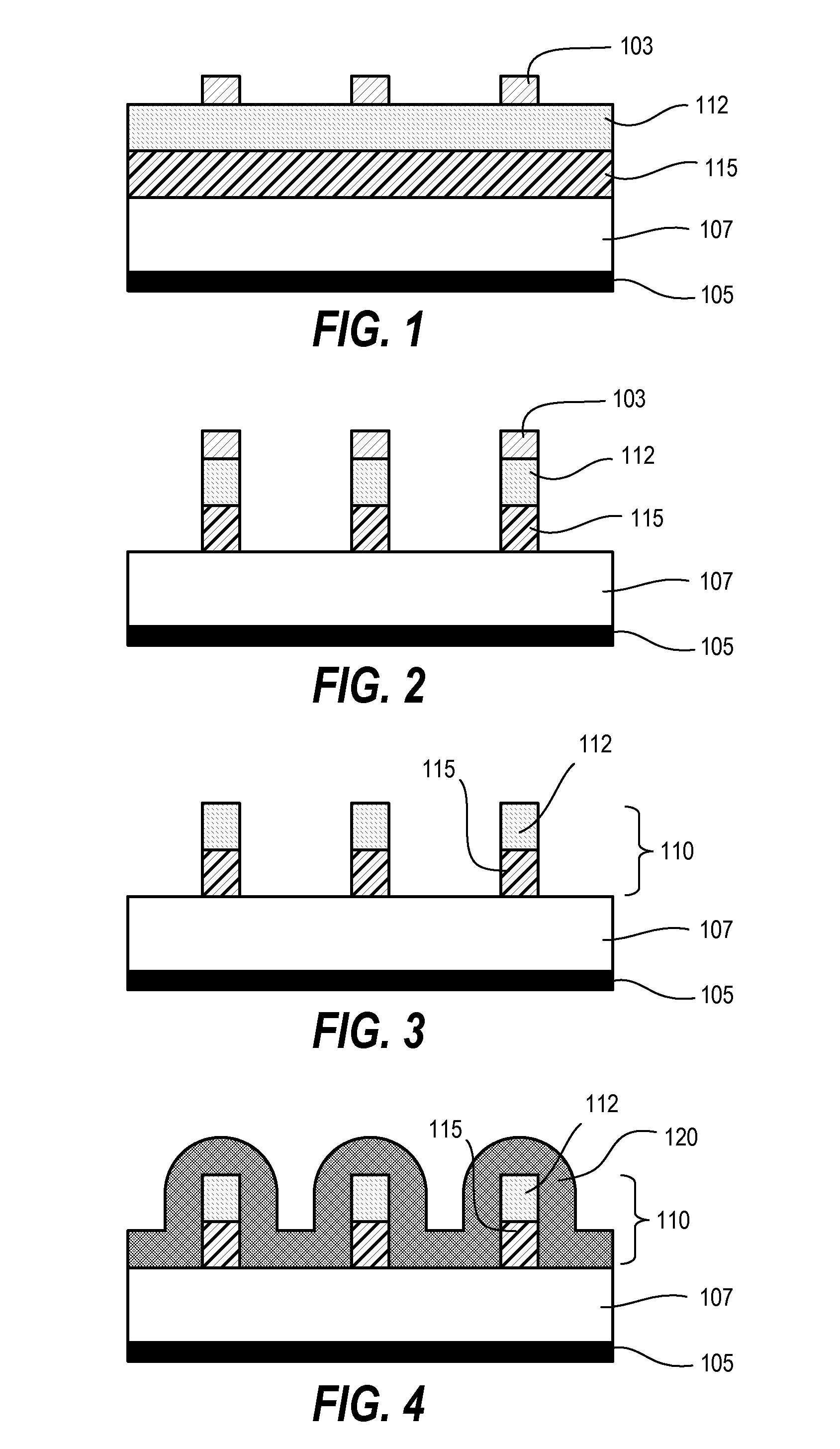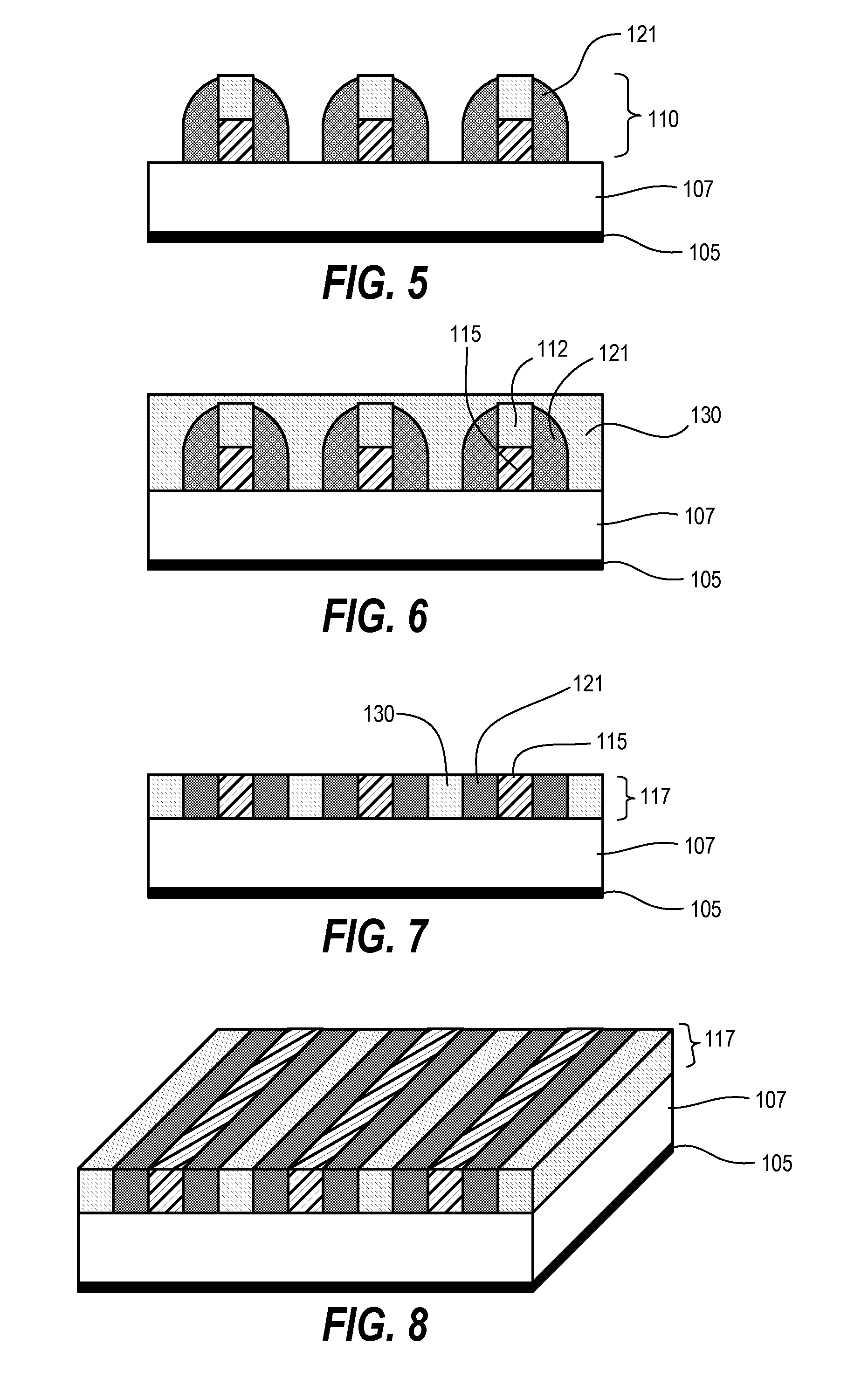Method for multiplying pattern density by crossing multiple patterned layers
a pattern density and layer technology, applied in the direction of basic electric elements, semiconductor/solid-state device manufacturing, electric devices, etc., can solve the problems of limiting the pitch or spacing between exposed features, affecting the resolution or rough surface of contact openings and other features, and affecting the resolution of conventional patterning techniques. , to achieve the effect of high anisotropy
- Summary
- Abstract
- Description
- Claims
- Application Information
AI Technical Summary
Benefits of technology
Problems solved by technology
Method used
Image
Examples
Embodiment Construction
[0028]Techniques disclosed herein include increasing pattern density for creating high-resolution contact openings, slots, trenches, and other features. Patterning techniques herein combine double patterning techniques, sidewall image techniques, as well as novel planarizing and orientation techniques. Patterning techniques herein can quadruple a density of features in a given pattern. In other words, such patterning techniques can take an initial critical dimension pitch and reduce this initial pitch so that it is a quarter or eighth of its initial size. This feature reduction technique also provides features or openings having high uniformity and fidelity.
[0029]In one example embodiment, an initial pre-pattern having a 1 to 3 aspect spacing ratio is transferred into two or more layers below to create bi-layer or multi-layer mandrels. A conformal material is wrapped around these bi-layer mandrels. The conformal material is anisotropically etched to expose tops of mandrels and top o...
PUM
 Login to View More
Login to View More Abstract
Description
Claims
Application Information
 Login to View More
Login to View More - R&D
- Intellectual Property
- Life Sciences
- Materials
- Tech Scout
- Unparalleled Data Quality
- Higher Quality Content
- 60% Fewer Hallucinations
Browse by: Latest US Patents, China's latest patents, Technical Efficacy Thesaurus, Application Domain, Technology Topic, Popular Technical Reports.
© 2025 PatSnap. All rights reserved.Legal|Privacy policy|Modern Slavery Act Transparency Statement|Sitemap|About US| Contact US: help@patsnap.com



